
From more well-known foods like lemon and lobster to more obscure foods like Lebkuchen and Luóhàn Guǒ, you’re sure to learn about several new foods to expand your culinary knowledge as you read through our list of 100 foods that start with the letter L!
Lablab

Lablab is an edible food crop (you can eat the leaves, roots, flowers, beans, AND pods). This plant can range from a light green to a gorgeous purple color, with the young pods commonly being eaten as a vegetable. The leaves and flowers can be eaten raw or cooked, with the leaves being a great source of iron.
One word of caution – you have to cook the beans before eating them because the raw beans contain a toxin!
Lacinato kale (AKA Dinosaur Kale)

This type of kale is dark blue-green and is thinner and more tender than “regular” kale, which is quite curly. Also called “dinosaur kale”, lacinato kale cooks more quickly than regular kale and is often described as tasting sweeter than regular/curly kale.
Lady apples
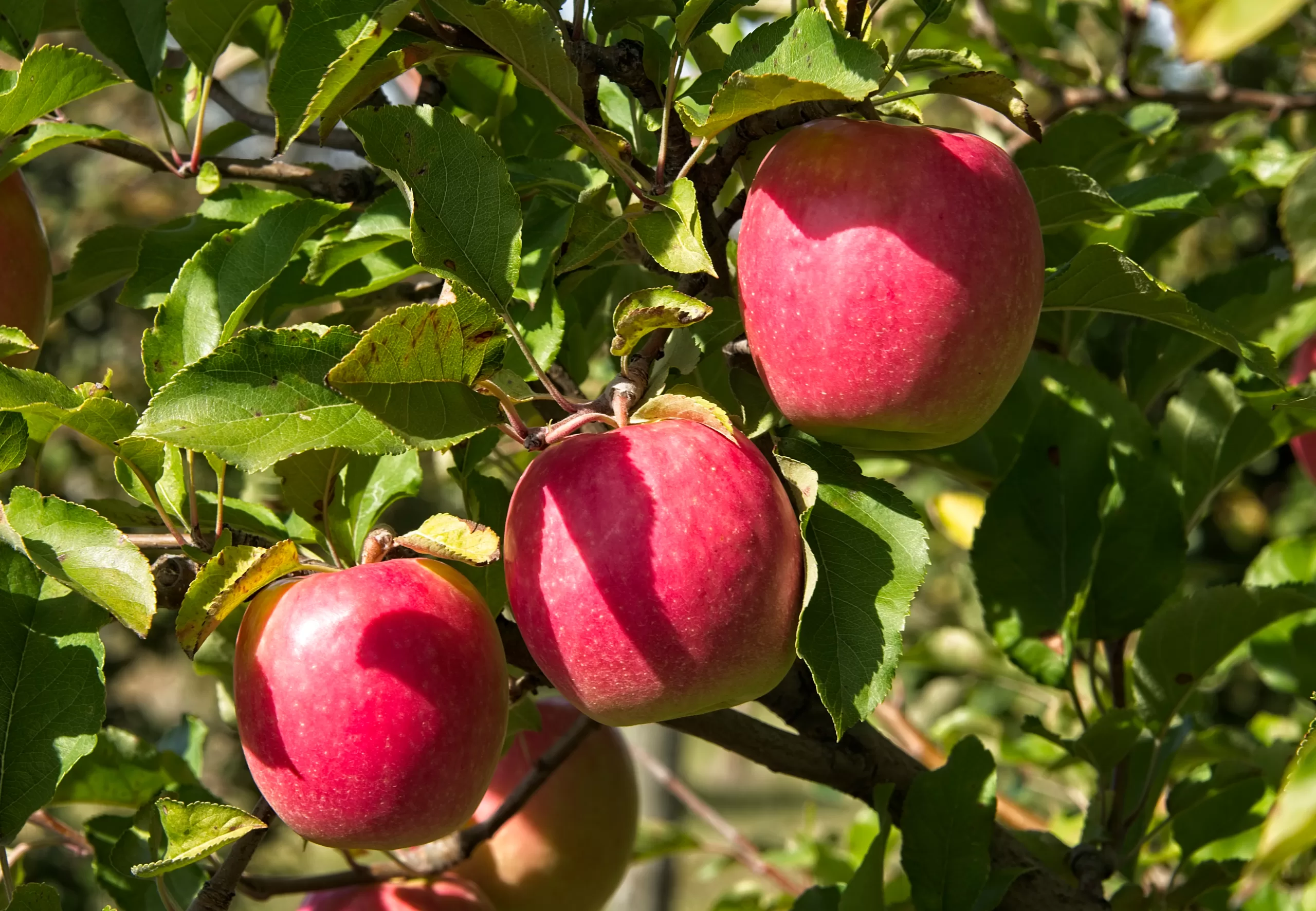
Lady apples are one of the oldest varieties of apples in the United States. They can be green, red, or yellow with some red “blushing”. A common type is the Pink Lady apple, which is – you guessed it – pinkish red!
Lady apples are sweet and tart and are less likely to oxidize (turn brown after cutting) than other types of apples, so they can be more visually appealing when set out on fruit trays.
Ladyfingers

One of the ingredients in tiramisu, ladyfingers are finger-shaped Italian pastries with a crispy outside and spongy inside. Ladyfingers are made with eggs, all-purpose flour, sugar, and vanilla.
Lady’s Mantle

Lady’s Mantle is a perennial herb native to Turkey. The leaves are edible and are most often used as an herbal remedy for soothing menstrual cramps and healing torn tissues (ruptured eardrums, muscle tears, hernias, etc).
Lahana Sarma

Also called Turkish Cabbage Rolls, Lahana Sarma are stuffed cabbages with a vegetarian filling of rice, Turkish spices, herbs, lemon, and olive oil cooked in a tomato paste sauce. Green cabbage works best for Lahana Sarma, but savoy cabbage works as well.
Lahmacun
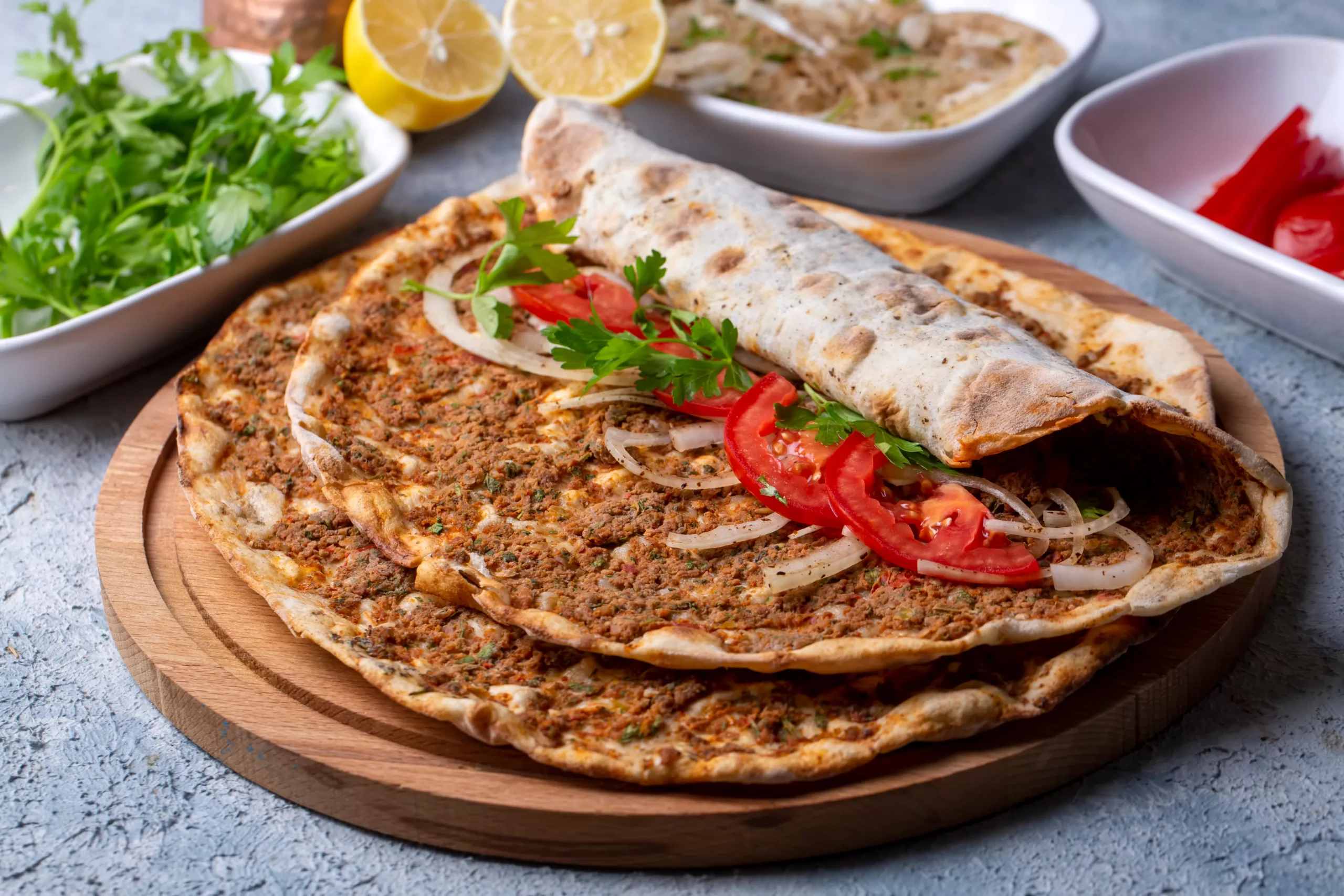
Lahmacun is a Turkish flatbread used as a thin crispy crust for pizza. It’s typically topped with minced meat (usually lamb, but ground beef can be used as well). The traditional dough for Lahmacun is made with semolina flour, which is higher in gluten than other types of flour.
Lakoocha fruit

Also called Lacucha or Monkey Jack, Lakoocha is a tropical fruit tree native to India in humid areas. The botanical name is Artocarpus lacucha, and the pulp of the Lakoocha fruit can be used as a natural remedy for liver health as well as in making curries and chutney. Lakoocha fruit can also be dried and used as a substitute for mango.
Lakota squash
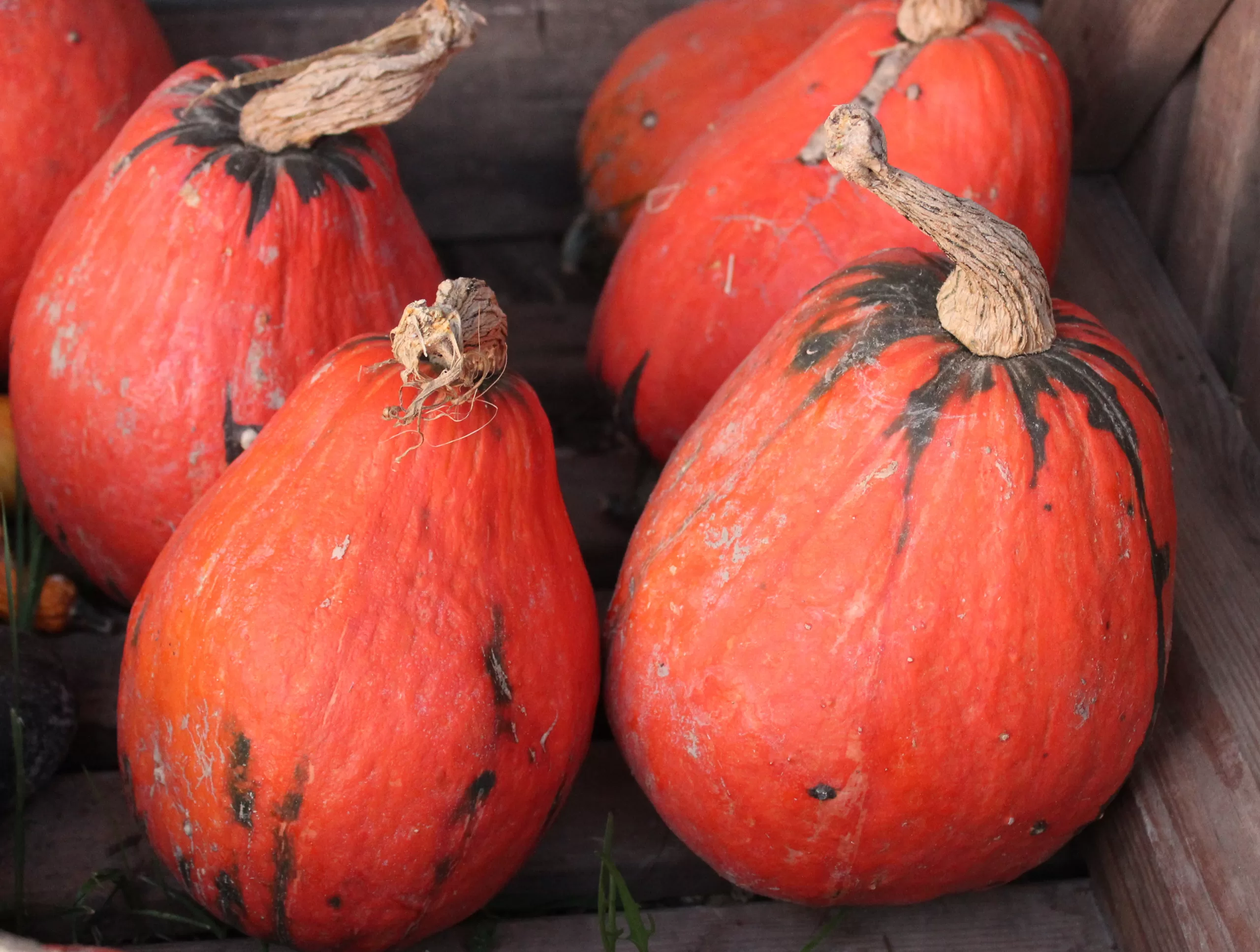
Lakota squash is a pear-shaped winter squash with an orange rind and green streaks. The flesh is fine-grained when it’s mature, making it a great squash for baking (and you can roast the seeds for a healthy snack).
Lalanga

Lalanga is a deep-fried flatbread with a puffy consistency, similar to an eclair. It has Turkish origins and can be eaten as a dessert by soaking it in syrup or used in savory dishes.
Lamb
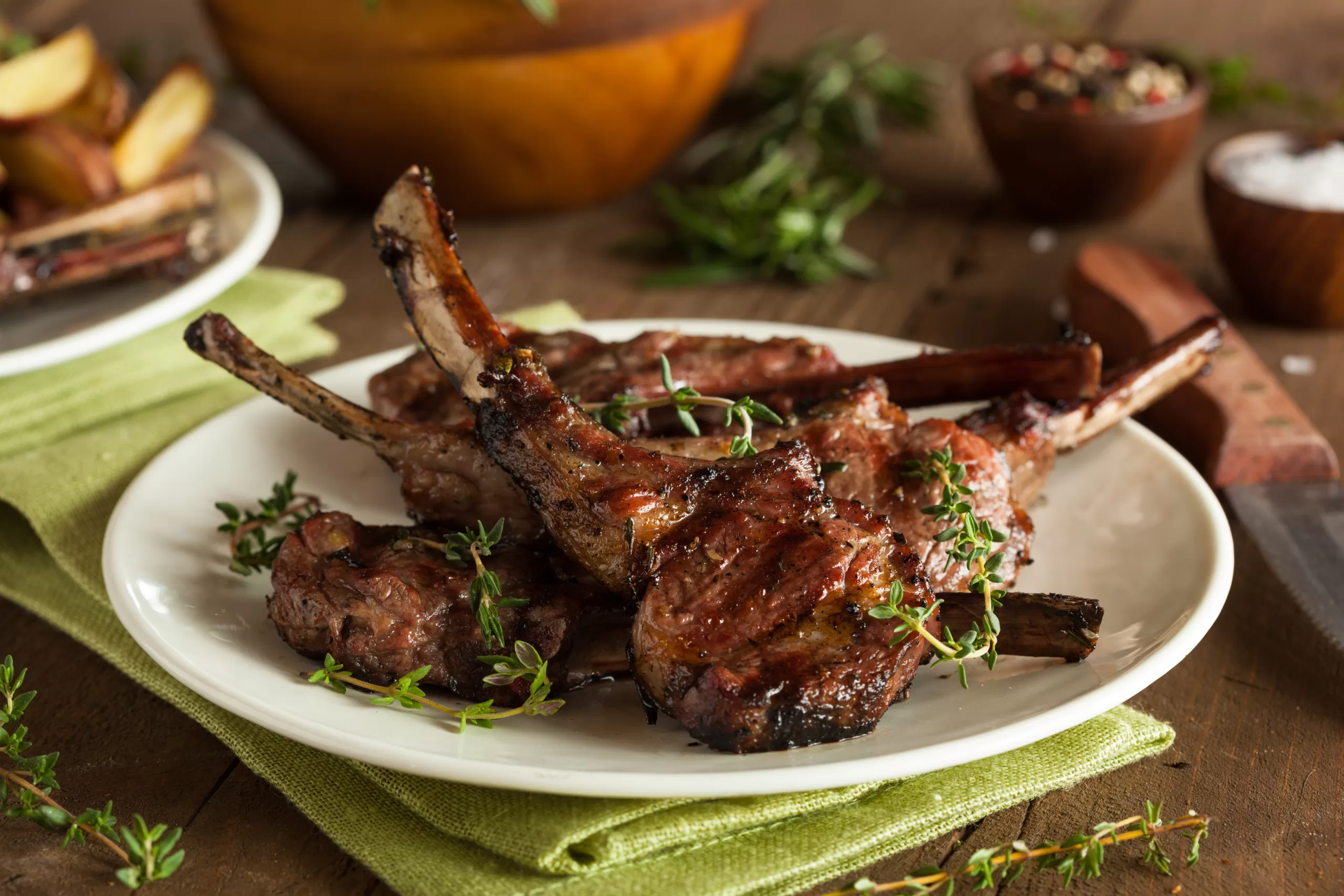
Lamb is a type of meat from sheep less than one year of age. It’s considered red meat, which is higher in saturated fat than leaner meats like poultry and white-fleshed fish. However, lamb is lower in fat and has a milder taste than beef.
Lamb meat is rich in iron and is commonly used in gyros, a traditional Greek sandwich made in pita bread.
Lamb chops
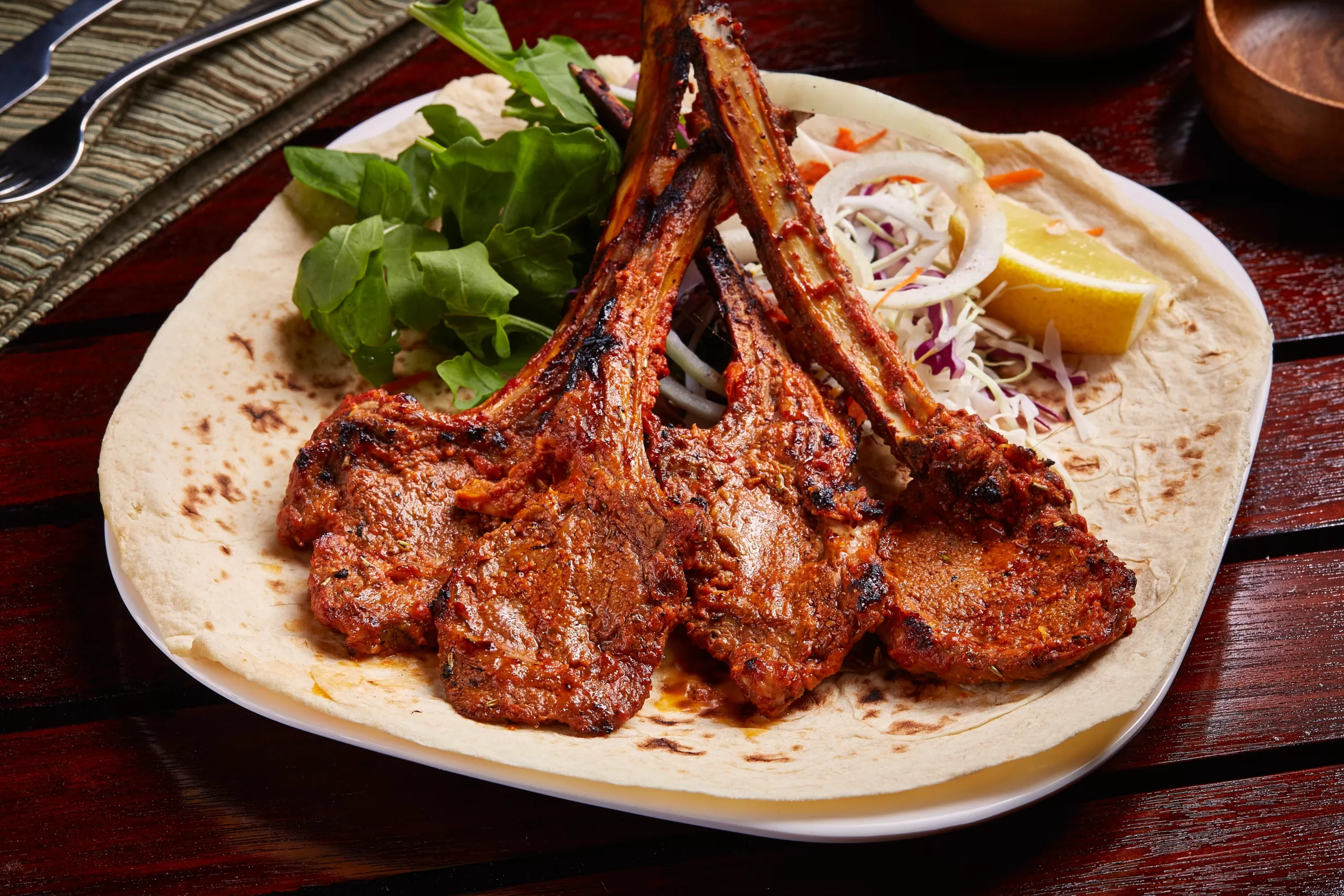
One of the most common cuts of lamb meat is the lamb chop, which is taken from the ribs of the lamb. They’re the most expensive cut of lamb and are relatively lean, but not as lean as chicken and other white meat.
Lambkin melon
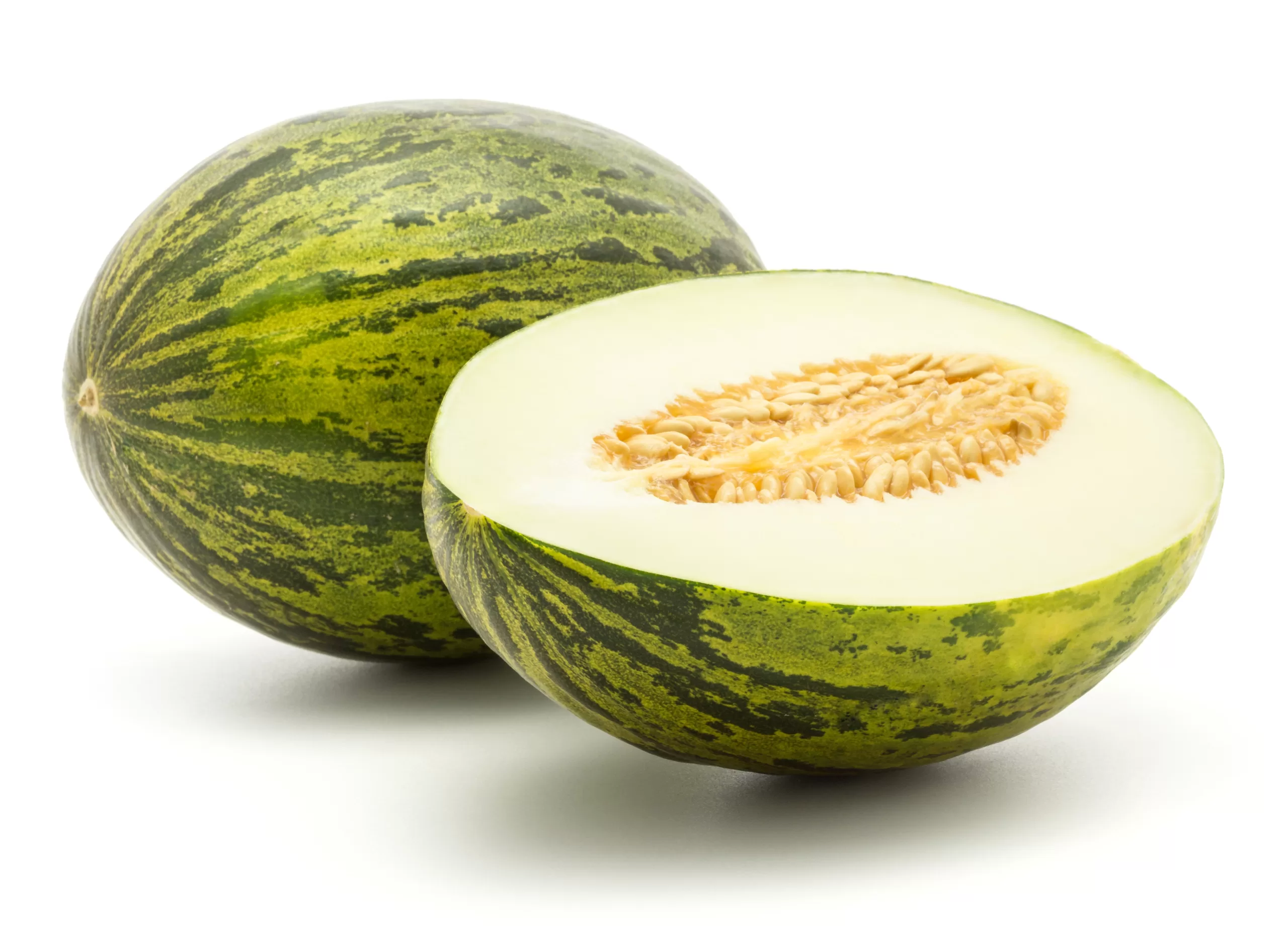
Also called Christmas melons, lambkin melons are yellowish green with mottled dark green areas. Lambkin melons are oblong and shaped like a football, becoming available in the summer through winter months.
Lambkin melons are typically eaten raw and pair well with bitter greens in salads. You can also use them in summer salsas with ingredients like jicama, cucumber, mint, and basil.
Lamb’s Lettuce
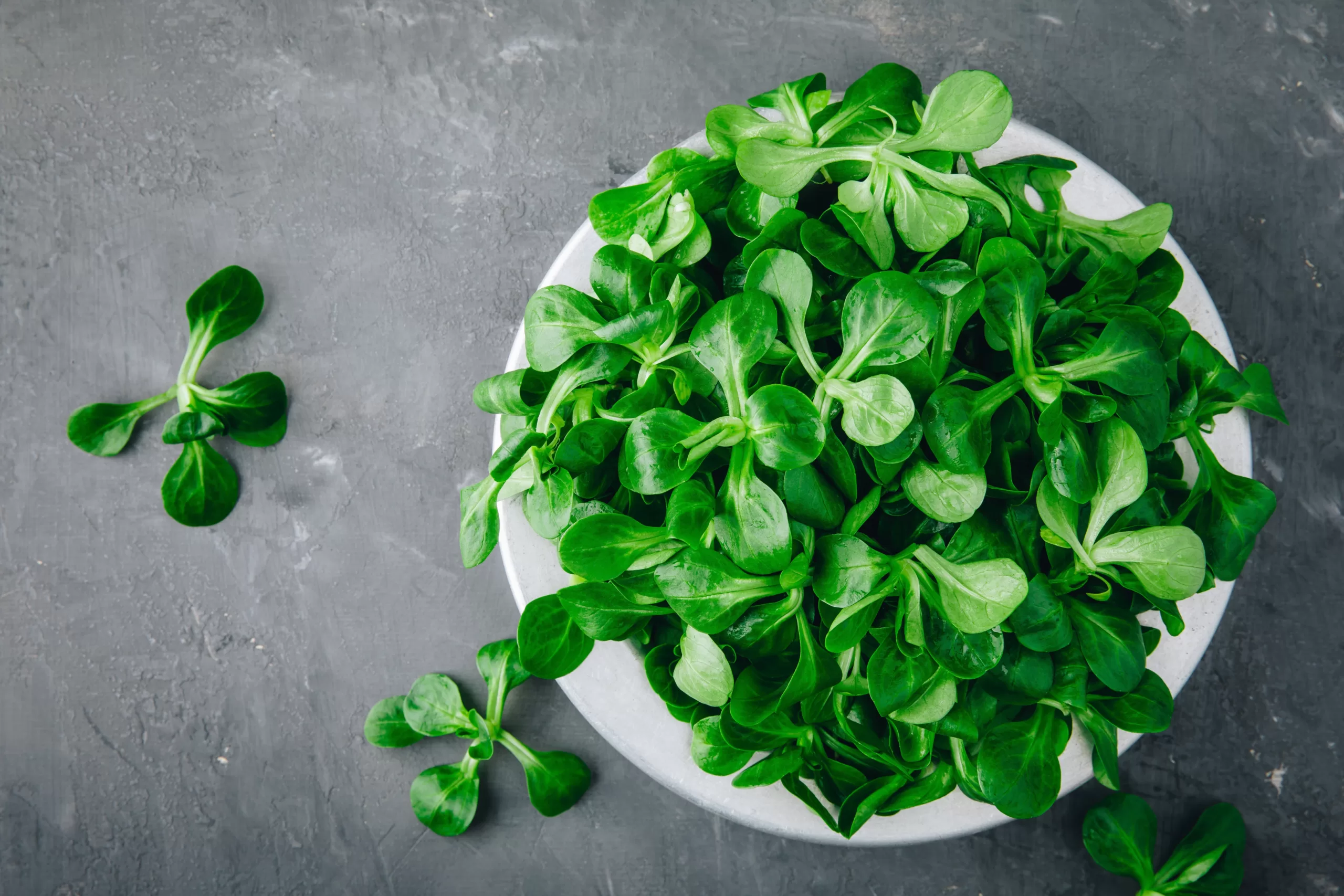
Also called ‘corn salad’, lamb’s lettuce has small leaves with a flavor described as nutty, mildly sweet, and buttery. Use lamb’s lettuce in salads or lightly wilt it into soups, curries, and sauces.
Landang
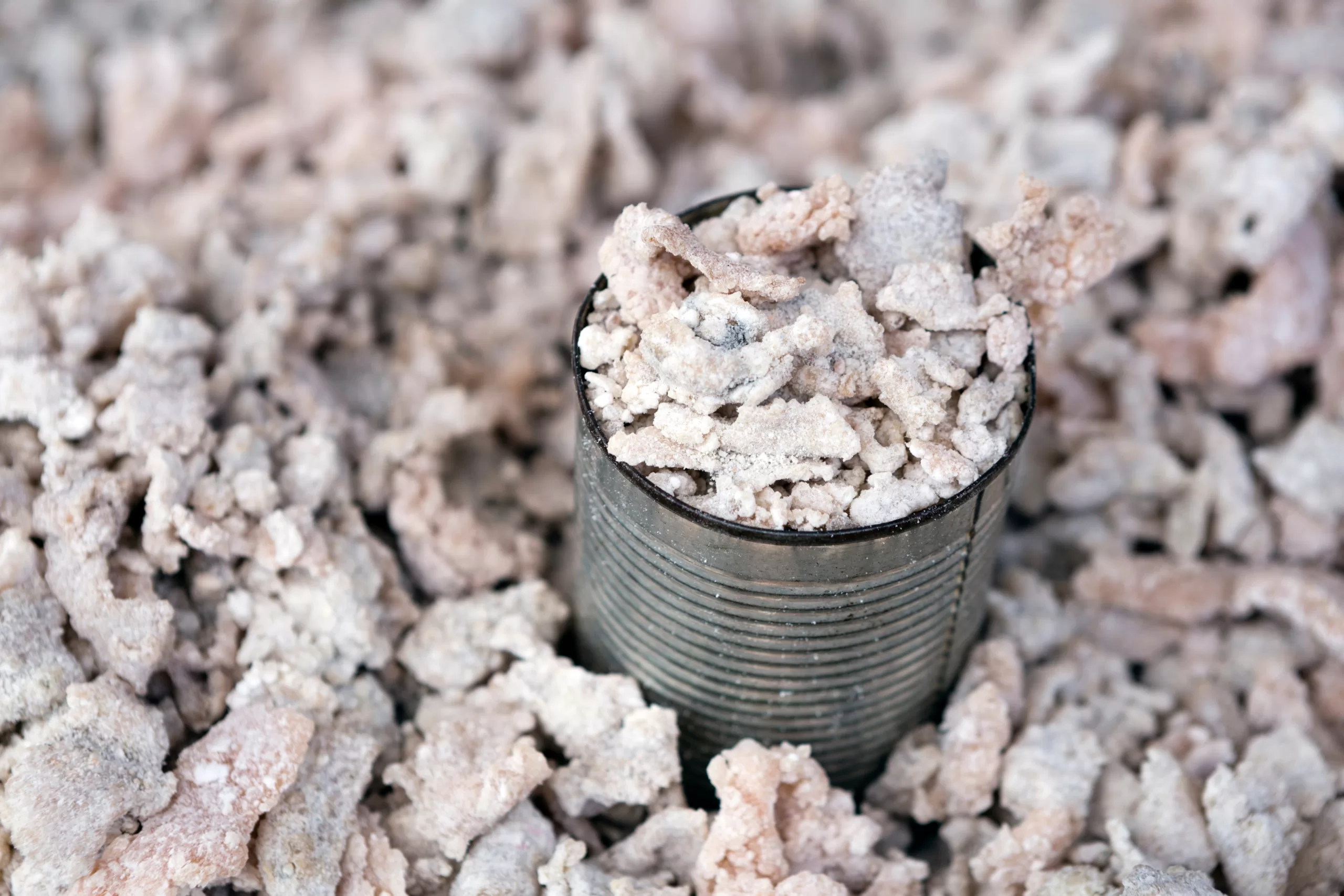
Landang is a processed starch product from the inner trunk of the buri tree, a palm tree native to the Philippines as well as other tropical countries. The finished product resembles tapioca and is also called “palm flour jelly balls”.
Landang is used in the traditional Visayan dish called binignit, a dessert soup that also includes coconut milk, saba bananas, and other ingredients.
Land cress
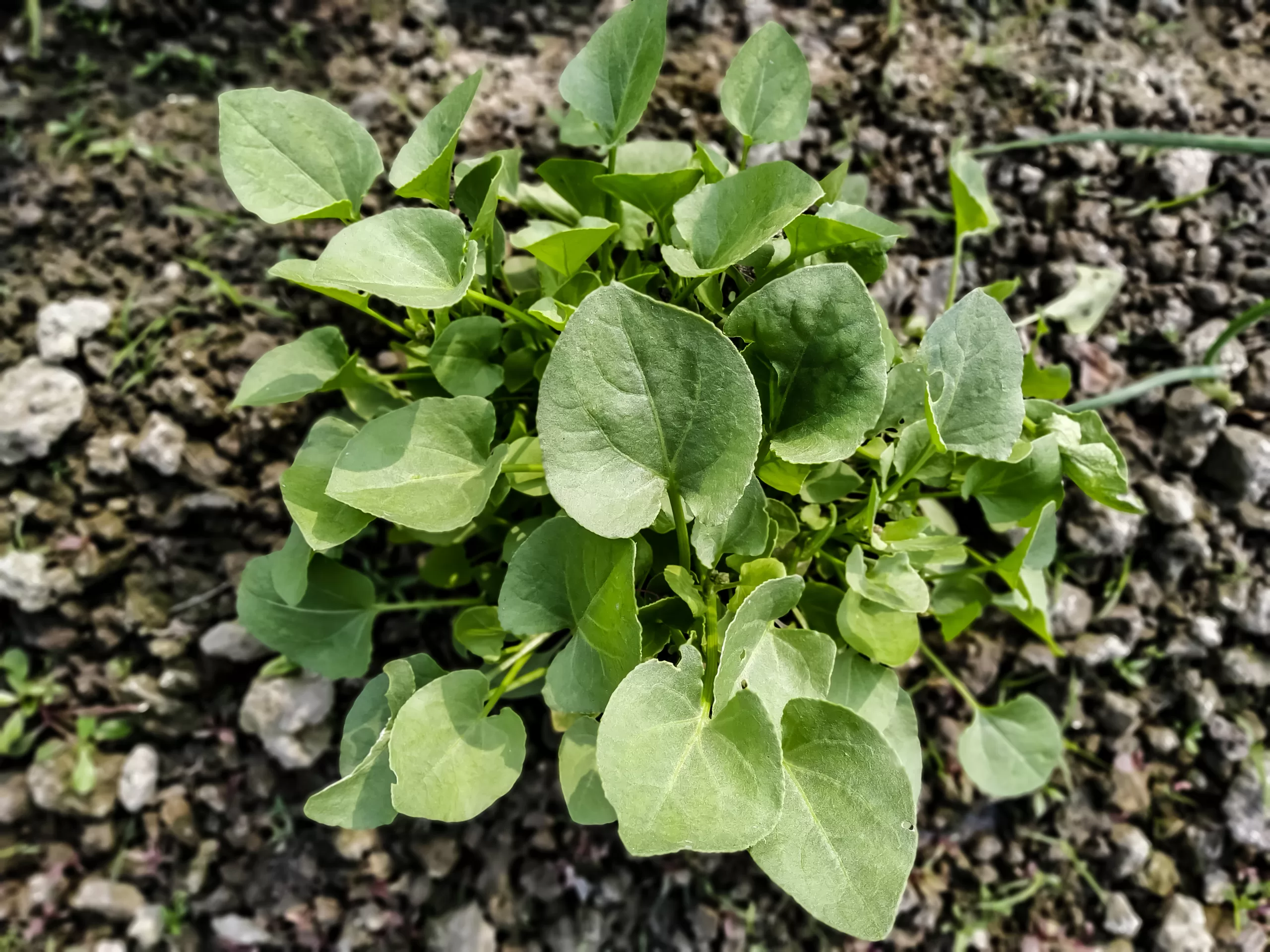
Land cress is a type of herb that can be used in a variety of dishes, from salads to pasta, or paired with meat. Similar to watercress (land cress can be used in place of watercress), land cress is different because it’s grown on land whereas watercress is semi-aquatic and grows along riverbanks and other areas of water. (See where they get the names?)
Land Snails

Land snails encompass different species of snails that dwell on land. While most land snails are edible, many marine snails (sea snails) can be toxic.
Since many species of land snails are edible, they are used in escargot (a French delicacy). Popular snails for escargot include Turkish snails, European garden snails, and Burgundy snails.
Langoustine

Also called ‘Norway lobster’, Langoustines look similar to Maine lobsters. Some people consider Langoustines prawns, but no matter what you call them, they’re more than twice as expensive as lobster!
The sweet meat of Langoustines is only found in the tail and claws, which is why the meat yielded is so low (and therefore so expensive).
Lantana Berries

These bluish-black berries with a metallic-like shine are native to the West Indies and Mexico. They are sweet and tart and when ripe are used to make jams, jellies, pies, and cordials. The berries can also be crushed to make a light purple natural dye.
You should only ever eat entirely ripe Lantana berries since green or partially ripened berries are toxic.
Lard
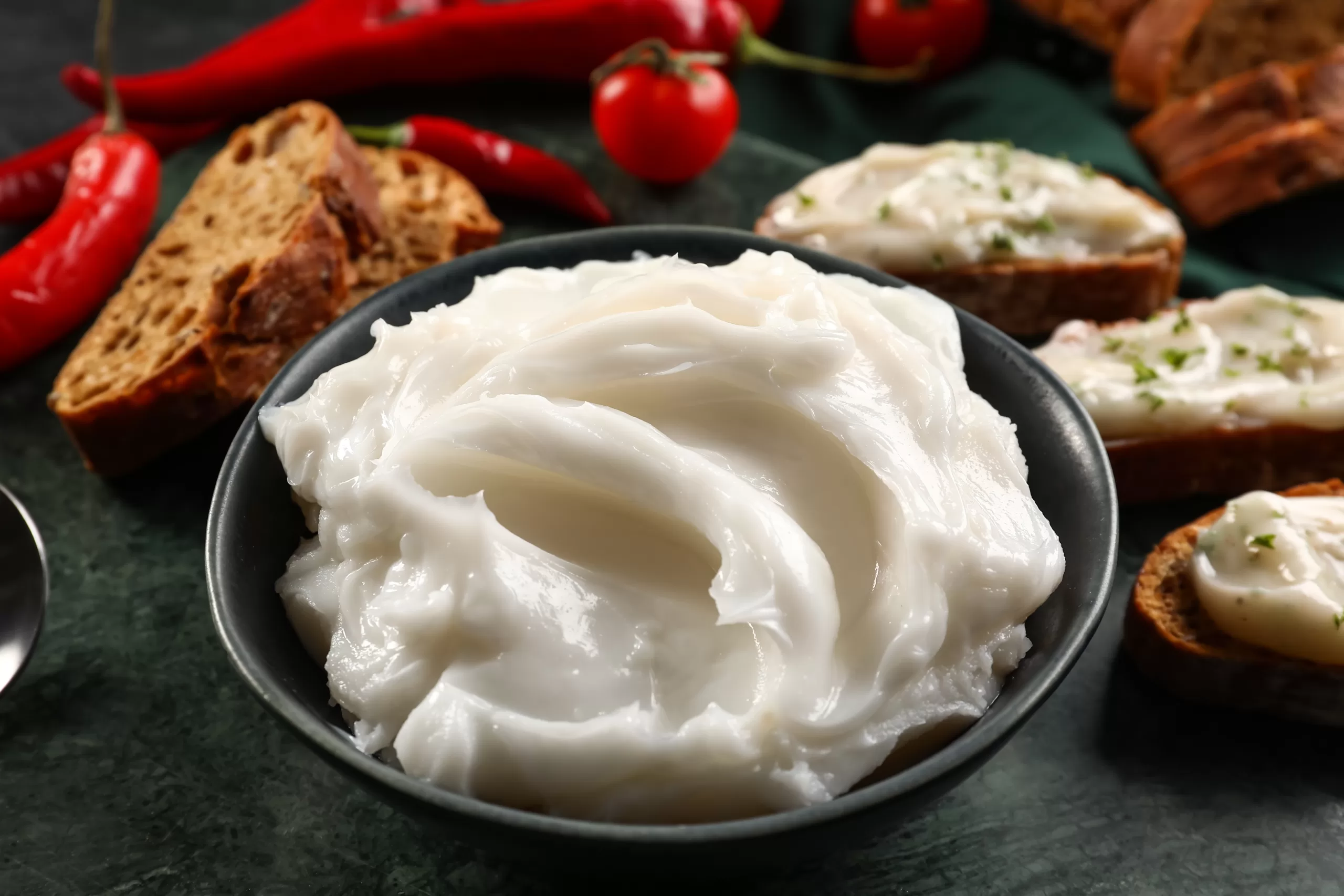
Lard is a solid type of fat made from animals – usually pigs. Lard typically has a white or pale yellow color and a smooth, creamy texture.
You can use lard in place of butter or oil in recipes, such as pie crusts and fried foods. The most common kind of lard is rendered lard, which has a neutral flavor that can be used in baking without having a pork flavor.
Lasagna

One of America’s favorite pasta dishes, lasagna is a layered dish made from lasagna noodles (a type of sheet pasta), ground meat, ricotta cheese, mozzarella, and pasta sauce, among other ingredients.
You can also make vegetarian-friendly lasagna without meat, and some recipes use sliced zucchini as “noodles” for a lower-carb version.
Last Chance Peaches
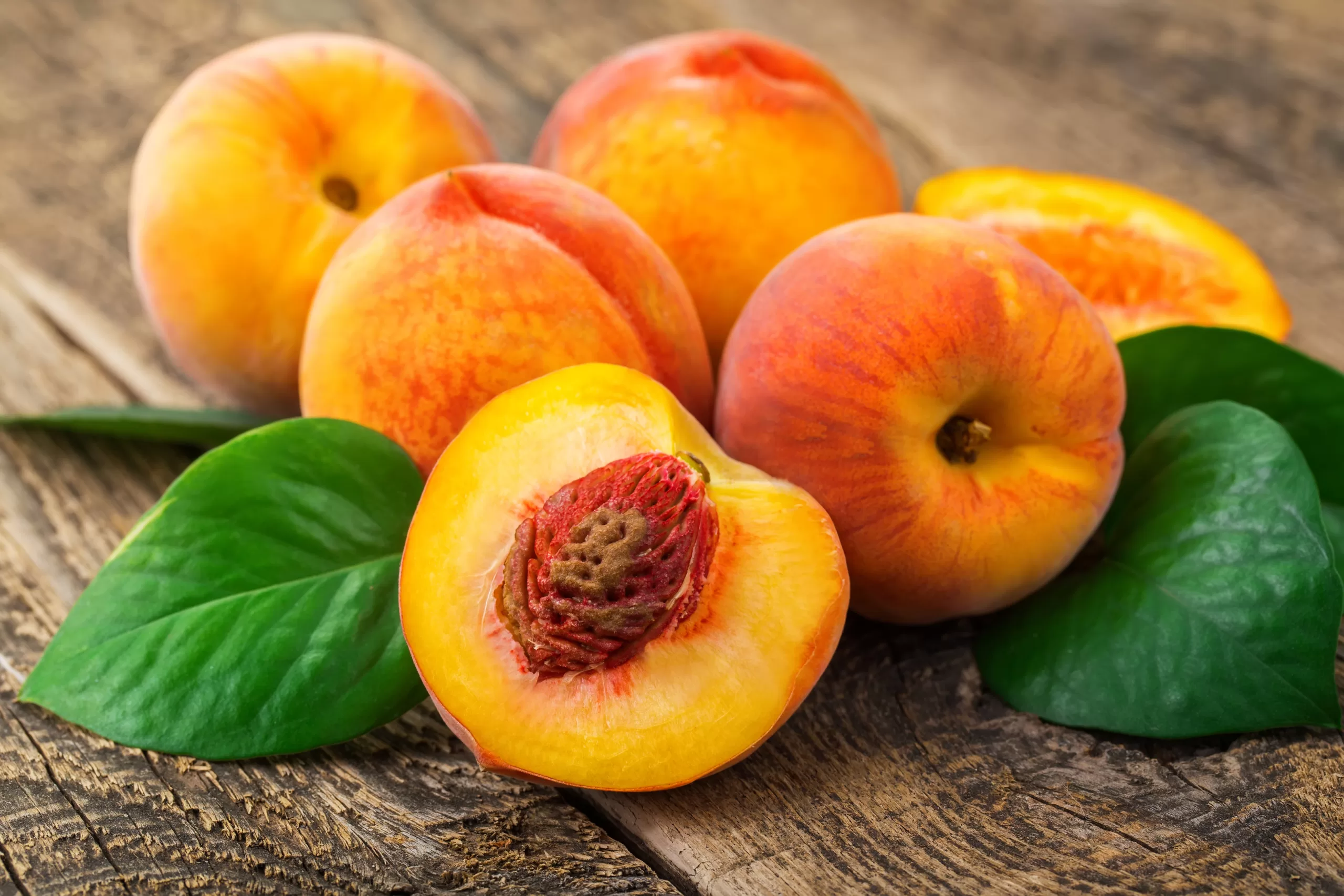
Last Chance Peaches are yellow with deep red blushing with lots of peach fuzz. They get their name for their harvesting season, which is in late summer and early fall (summer is usually peak peach season, so these are later than normal, or “last chance”).
Last Chance Peaches are great for canning, but you can use them however you’d use any peach, such as making pies, jams, jellies, etc.
Latke

Latkes are a type of potato pancake in Jewish cuisine that is traditionally made to celebrate Hanukkah. Latkes are made with Russet potatoes, eggs, onion, flour, salt, and pepper and are fried in oil.
Though they are associated with Hanukkah, latkes originated from Italian pancakes which were made with ricotta cheese.
Lavash

Lavash is a thin flatbread that is usually leavened, which means it’s made with yeast or another leavening agent. However, lavash can also be made unleavened with just flour, water, and salt.
Lavash has been a staple in many countries and cultures including Armenia, Iran, and Kazakhstan. It can be used for sandwiches, dipping, pizza crust, or simply eating on its own or with some cheese.
Lavender

Lavender is a plant most known for its aroma (lavender is one of the most popular essential oils+++). You can also use lavender in cooking and baking to add a floral flavor or make tea from the leaves.
Lavender is known for its potential to promote a sense of calm and boost the mood, while it can also be used topically for skin health.
Laver

Laver is a type of edible seaweed with a reddish-purple and green color that turns black once it’s dried. It usually grows on exposed ocean shores and is used as a base for soups, flavoring for other dishes, and a wrap for sushi.
Laver is also known as ‘Wild Atlantic Nori’ and is considered very nutritious because it’s high in iodine, iron, and protein.
Lawyer’s Wig Mushrooms

Also called “Shaggy Inkcap” with a botanical name of Coprinus comatus, Lawyer’s Wig Mushrooms are a type of edible fungus that is ideal to eat when young and fresh (as they age they turn sticky and inedible).
They don’t have as much flavor as more popular mushrooms like Morels or Chanterelles, but they can be used to make soups, sauces, can be served with meat dishes, or fried.
Leaf mustard

Also called “mustard greens”, leaf mustard is rich in calcium, phosphorus, and beta-carotene, a nutrient that promotes eye health.
Use leaf mustard in green salads, soups, stir-fries, or roasted as a side dish.
Leatherjacket

No, it’s not clothing – it’s a type of fish! Also called leather jack, this fish isn’t as common as tilapia or cod but can be eaten when it’s cleaned and skinned shortly after catching. You can pan-fry it or cook it like other fish (grilling, poaching, baking, etc).
Lebkuchen

Lebkuchen is a baked good invented by medieval monks in Germany around the 13th century. Popular around Christmas Time, Lebkuchen is baked with spices like cinnamon, ginger, cloves, and nutmeg and is soft and nutty in texture (not crisp like gingerbread cookies). The texture falls somewhere between a cake and a cookie and was Lecithin
Leek

Leeks are similar to garlic and onions and are in the allium family. Leeks taste like a mild, sweet onion that are less strong-tasting than green onions.
Leeks can be roasted and eaten as a side dish or used in various recipes like soups, pasta, risotto, stuffing, pizzas, and more!
Legumes

Legumes are a broad term for beans like chickpeas, kidney beans, and fava beans, but also includes soybeans and peanuts. Legumes are rich in protein, making them an important part of plant-based diets like the vegan diet.
Fun fact: “legume” refers to a plant in the Fabaceae family, while a “pulse” is the edible seed inside a legume plant. For instance, a pea pod is a legume, but the edible pea inside the pod is called a pulse!
Lekvar

Lekvar is a type of fruit butter used to fill pastries and is typically made from dried plums or apricots. It originated from Hungary and is also referred to as “prune butter”.
Lemon

Ahh, a familiar face! Lemons are a type of citrus fruit used in a variety of dishes and drinks. Lemons are known for their tart taste and are low in sugar, unlike other types of fruit (1.5 grams of sugar in one lemon).
Lemonade Fruit

Lemonade fruit is a type of citrus fruit that is sweeter than a regular lemon. It’s a cross between a lemon, lime, and a mandarin, and was discovered in New Zealand so is sometimes referred to as ‘New Zealand lemonade’.
Lemonade Fruit can be used in place of regular lemons for a sweeter, less tart flavor.
Lemon Aspen

Lemon aspen is a plant that has a strong lemon and grapefruit taste. Lemon aspen is used in a variety of dishes such as sauces, jellies, and chutneys.
Lemon aspen has a higher antioxidant content than blueberries and is also a source of nutrients like folate and iron, so they’re incredibly nutritious as well.
Lemon basil

A hybrid between basil and African basil, lemon basil has an herbal, sweet flavor with lemon notes. You can use lemon basil in place of regular basil for a unique flavor that can be used in a variety of dishes.
Lemon Cucumber

Lemon cucumbers have a more mild taste than regular cucumbers. They are yellow in appearance but don’t taste like lemons, and can be used for salads or eating plain.
Lemon Drop Melon

Lemon drop melons are a hybrid cross between a Galia melon and another melon high in citric acid (thus the ‘lemon’ part of the name for the tartness). They have a sweet-tart flavor, somewhere along the lines of lemons crossed with a honeydew. They are medium-sized and should feel heavy for their size (they average three pounds).
Lemon Drop Pepper

Lemon drop peppers are a great cross between citrus and pepper flavors. Don’t let the “lemon drop” part fool you, though. These peppers are very spicy, similar to cayenne, serrano, and tabasco!
Lemongrass

Lemongrass is a plant that’s commonly used in Asian dishes and helps add a pop to soups, salads, and curries. It has a citrusy flavor that is concentrated in the bottom third of the stalk (closest to the root), yet you can save the woodier tops for herbal teas and other uses.
Lemon Meringue Pie

Lemon meringue pie has a smooth, lemon filling and is topped with its signature meringue topping. What is meringue, anyway? It’s an airy topping made of whipped egg whites and sugar and is French in origin.
Lemon Pepper

Lemon pepper is a seasoning made of dried lemon zest, salt, and pepper – though the ingredients might vary a bit depending on the manufacturer. Lemon pepper pairs great with chicken, fish, and roasted veggies.
Lemon Plum

Lemon plums are a specific variety of plums that grow in Chile. Their outside resembles a lemon (both in shape and color) but the inside is more like a plum, but with a lemon-like aftertaste.
Make sure you wait until the lemon plum is soft and ripe, which will result in a sweeter-tasting fruit than if you bite into it while it’s still crisp.
Lentils

Lentils are a type of legume known for their rich iron and protein content, making them popular in plant-based diets. Lentils are lower in indigestible carbohydrates compared to beans, so they may be easier to digest.
There are several types of lentils, but some of the more common ones are brown lentils, green lentils, and red lentils.
Lentil soup

If you don’t know what to do with lentils, look no further than lentil soup. Lentil soup is healthy, hearty, and easy to throw together. Common ingredients (besides lentils, of course) include olive oil, onions, carrots, garlic, spices, chicken or vegetable stock, and tomato, among a few others.
Lettuce

There are four categories of this leafy green vegetable: looseleaf, butterhead, crisphead, and romaine. Of these types, romaine lettuce is thought to be the most nutrient-dense because it has higher concentrations of vitamins like vitamins C, K, and A.
(If you’re curious what iceberg lettuce is, it’s crisphead lettuce!)
Lettuce wrap

If you’ve ever been to an Asian restaurant, you’ve probably seen lettuce wraps on the menu. Lettuce wraps are a low-carb, protein-packed appetizer that combines ground meat and other ingredients in pieces of lettuce. You can use any type of lettuce to make lettuce wraps, but Boston bibb lettuce (butterhead) and romaine hearts are especially popular.
Liberty apple

It’s not surprising that the Liberty apple originated in New York! Specifically, the liberty apple was developed at the New York State Agricultural Experiment Station in the 1970s and is a hybrid.
The Liberty apple has a sweet-tart taste with yellow flesh and red overtones. It’s versatile and can be eaten fresh, used for baking, or canned.
Licorice

Licorice is a type of candy made from sugar, licorice extract (in some cases), and a binder such as starch, gelatin, or flour. There are different flavors of licorice, and some don’t contain any licorice extract (which contains anise oil).
Popular flavors of licorice include strawberry, cherry, and black licorice – but there are dozens of specialty flavors, including sour versions.
Licorice root

Licorice root is used to flavor candy and drinks, and as a dietary supplement to help with digestive health, coughs, and more. It’s also used to make syrups, sauces, and custards, and it needs to be steeped in hot liquid to extract most of the flavor.
While you might expect licorice root to be in licorice candy, that’s not always the case. Anise oil is very similar to licorice root in taste and smell, so it’s often used in licorice products.
Liederkranz

Liederkranz is a specific type of cheese that is similar to German Limburger cheese. Liederkranz was created in the 1800s in New York and was meant to mimic a German cheese called Bismarck Schlosskase, a strong-smelling cheese.
Liederkranz is only made in Wisconsin!
Li Jujube

The Li Jujube tree produces fruit that is sweet and chewy like dates once they are ripe. The taste is described as being sweet like apples, and jujube fruit is also high in potassium, a nutrient that can help promote healthy blood pressure levels.
Lilly Pilly Fruit

Lilly Pilly berries are unique to Australia, with around 60 different species of them! Not all species are tasty, with the Creek Lilly Pilly and Small Leaved Lilly Pilly being one of the most palatable types.
Lilly Pilly berries can be used to make jams, jellies, and syrups. They can also be used as a topping over ice cream and in baked goods, just like any other berry.
Lima beans

Lima beans are also known as butter beans because of their buttery, smooth texture. Lima beans are a type of legume so they are high in protein and fiber like other legumes.
Limburger

Limburger is a type of cheese that originated in the Belgian province of Liege, and was later produced in Germany and the United States. Limburger cheese is most known for its scent, which is described as “sweaty gym socks”.
What causes the scent? Cheesemakers smear Limburger cheese with bacteria (Brevibacterium linens, to be specific) which help the cheese to ripen and develop its flavor. (Don’t worry, it tastes better than it smells, and the bacteria aren’t harmful!)
Brevibacterium linens are the same type of bacteria that eat dead skin cells on your feet and make your feet smell – so the sweaty gym sock analogy really isn’t too far off.
Lime

Limes are a type of citrus fruit that are acidic and sour, similar to lemons. Lemons and limes are almost nutritionally identical, with the main difference being the flavor: lemons are a bit sweeter while limes are more bitter.
Limes are commonly added to dishes to add flavor, such as cilantro lime salad dressing and coconut lime rice.
Limequat

If you guessed that the limequat is a hybrid between a lime and a kumquat – then you’re absolutely right. The limequat was hybridized in the early 1900s and has a sweet-tasting skin with a bitter pulp similar to limes.
Unlike limes, you can eat limequats whole since their skin is sweeter than the pulp.
Limestone lettuce

Limestone lettuce is a type of butter lettuce. It has a delicate flavor and smooth, buttery leaves that pairs well with a variety of foods from seafood to fruit and cheese.
Limpa

Limpa is a type of rye bread made with molasses or brown sugar. Limpa is Swedish for “loaf” and typically flavored with spices like caraway, fennel, and anise.
Limpets

While it’s not widely eaten, limpets are a type of edible aquatic snail. If you do eat limpets, they’re often paired with garlic, olive oil, lemon juice, and a bit of parsley or cilantro.
Lingcod

Lingcod are a type of fish, but they’re not related to cod at all (a bit confusing, I know). Lingcod are bottom-dwelling fish found in depths of 1500 feet or more on the West Coast of North America.
Lingcod is described as being sweet, firm, and moist with large flakes when cooked.
Lingonberry

Lingonberries are tart like cranberries but are a bit sweeter than cranberries. Don’t expect lingonberries to be anywhere near as sweet as raspberries or strawberries, though!
You’re not likely to find many lingonberries in North America since they grow more abundantly in northern Europe. There you’ll find lingonberries in jams, jellies, syrups, juice, and more.
Linguica

Linguica is a type of sausage made from pork and seasoned with spices like garlic, onion, and paprika. It originated in Portugal and can be used in a variety of dishes including baked pasta dishes, soups, rice dishes, and more.
Linguini

Linguini (also spelled linguine) is a type of pasta similar to spaghetti, but it’s flat instead of round. Linguini is similar to fettuccine pasta, but it’s a bit narrower.
Linguini pairs well with oil-based sauces and pesto and is used in several different recipes as it’s quite versatile.
Lionfish

Lionfish are considered an invasive species, so if you want to help remove them from their negative impact on marine life, you can eat them! Lionfish have venomous spines that need to be removed first (the venom is present even after the fish dies) but can be quite tasty when cooked!
The taste of lionfish is compared to that of mahi mahi and can be used in fish tacos or simply pan-sauteed in butter.
Lipstick pepper

Lipstick peppers are a type of pimento pepper, which is quite mild in terms of spiciness. Peppers are rated in Scoville Heat Units (SHU) to determine their spiciness – the jalapeno pepper can measure up to 8,000 Scoville Heat Units while a lipstick pepper averages less than 500 SHU.
Little Ben Gooseberry

Little Ben Gooseberries come from a shrub and are sweet berries with tart skins. You can use gooseberries in baking, in preserves (jams, jellies, etc), or eaten plain.
Littleneck clams

Littleneck clams are oval to round and grow up to around 3 ½ inches long, and are also known as “rock cockle” or “bay cockle”. You’ll find littleneck clams in parts of Alaska and California. Clams are rich in protein and iron while being low in fat, making them a nutritious option.
Lit’l Smokies

If you’ve ever been to a Superbowl party, Lit’l Smokies have probably been served. Hillshire Farms makes Lit’l Smokies which are fully-cooked cocktail sausages made of pork and chicken. Lit’l Smokies are usually served tossed in barbeque sauce, ketchup, and Worcestershire sauce.
Liver

Liver is an organ that is incredibly rich in nutrients like iron, vitamin B12, and vitamin A. Beef liver is considered the most nutrient-rich type of liver, though other types can be eaten as well.
Liver is typically prepared by marinating it and then sauteing it in a pan until browned. Liver and onions are a popular pairing!
Liver Cheese (Leberkase)

Liver cheese is a mixture of pork meat, pork liver, salt, and onion and is in a square block. Interestingly enough, liver cheese doesn’t contain any cheese!
Liverwurst

Liverwurst is a type of sausage made of pig or calf liver along with spices. There are different types of liverwurst recipes throughout Germany, so the taste will vary depending on the spices used.
Liverwurst is fully cooked when you buy it, so you can add it to sandwiches, pan-fry it, or use it however you’d like!
Llama

It’s not a popular type of meat, but you can eat llamas, especially in areas of the world like Argentina. Llama meat is low in fat and rich in protein and is commonly grilled or used in savory pies called empanadas.
Loaf

The term ‘loaf’ refers to several food types formed into an oblong shape and sliced into portions. For instance, a loaf of bread and meatloaf are types of loaves.
Lobscouse

Lobscouse is a hearty Scandinavian stew that includes boiled meat and vegetables like potatoes, carrots, onions, and peas. Traditionally, lobscouse was eaten by sailors and served with a hard biscuit called a hardtack or ship’s bread.
Lobster

A lobster is a marine crustacean that is considered a culinary delicacy. Lobster is steamed or boiled and typically served with melted butter for dipping.
Lobster is expensive because of the process it takes to farm them, and they’re difficult to raise due to common diseases that make them inedible.
Lobster mushroom

Lobster mushrooms are a specific type of mushroom that takes on an orange hue like lobsters, which sets it apart from other mushrooms. Their taste varies, so opt for fresh lobster mushrooms with a completely white interior for the best flavor.
Lodi apples

Lodi apples are a hybrid between “Yellow Transparent” and “Montgomery Sweet” apples that were introduced to the United States in the 1920s.
Lodi apples have a soft flesh and a sweet-tart taste that make them perfect for making pies and applesauce.
Loganberry Fruit

Loganberry is a hybrid of the North American blackberry and the European raspberry. They are grown in large quantities in the northwest (Oregon and Washington) as well as in other countries like England and Australia. They make great jams and pies and can be eaten plain!
Loin

Loin refers to a cut of meat from the back area of the animal. There are different cuts of loin beyond that, such as sirloin and tenderloin.
In beef, loin cuts are very tender and juicy, and among pork, it’s one of the leanest cuts with minimal fat (marbling).
Lollipop

Lollipops are a type of flat or rounded candy on the end of a stick. Also called “suckers”, lollipops were created in the early 1900s and come in countless flavors. Some lollipops have candy or gum on the inside while others are just plain and made of sugar, corn syrup, water, and other flavorings.
Lollo Rossa

Lollo rossa is a type of red-leaf lettuce with heavily frilled leaves. It’s a loose-leaf lettuce that provides a lot of loft and texture for salads. The flavor isn’t bitter like some types of lettuce, and it’s considered a mild-tasting lettuce.
Lo Mein

Lo mein is a Chinese dish with vegetables, protein (beef, chicken, pork, tofu, etc), and fresh tossed noodles (typically egg noodles). The main difference between lo mein and chow mein is that chow mein can be made with fresh or dried noodles and can be crispy, while lo mein noodles are soft and chewy.
London Broil

London Broil is a dish made from beef, typically the top round which is flavorful and decently tender. There is no official London broil cut, though some grocery stores will label beef as London broil so it’s a bit confusing!
London Broil is made by marinating the meat and then broiling it in the oven to make it juicy and tender.
Long beans

Long beans are also known as asparagus beans or Chinese long beans. They look like long versions of green beans, but they’re not related. In fact, long beans are in the same species as black-eyed peas!
Long beans are usually cooked in stir-fries but can also be eaten raw.
Long Neck Avocados

Long neck avocados have a gourd-like shape and are very long compared to regular avocados like Hass avocados. They can grow up to 13 inches long and can weigh 1-3 pounds each!
Long neck avocados are native to tropical areas such as Florida, the Caribbean, and Central America.
Loquat

Also known as Japanese apricots or plums, loquats are slightly bigger than apricots and are pale orange. The skin isn’t usually eaten and is usually peeled, and loquats are sweeter than they are tart.
Loquats aren’t typically sold in grocery stores because they are very delicate and don’t handle shipping well, but you can find them in some farmer’s markets.
Loroco

Loroco is a climbing vine with edible flowers. The taste is compared to asparagus but with a tangier and more pungent flavor.
Loroco is used in Central American dishes such as the filling of pupusas, a thick griddled flatbread.
Lotus Root

Lotus root is an edible rhizome (the same classification as ginger and bamboo) with a crunchy, slightly sweet but bitter taste. It’s used as a medicinal root but can also be used in salads, soups, stir-fries, and curries, especially in Chinese, Japanese, and Korean dishes.
Lovage

Also called mountain celery because it resembles celery, lovage is used as a medicinal plant to help with digestive issues and more. You can eat lovage raw, and its seeds can be used as a spice due to its citrusy flavor. Lovage can also be added to salads.
Lovage is native to southern Europe but can be grown in certain areas in the United States with cool climates. Lovage is a perennial plant, so it’ll come back in the spring after going dormant in the winter.
Low Juneberry

Low juneberry is a shrub that provides small dark purple berries that are sweet. Juneberries are safe to eat and are rich in antioxidants – even more so than blueberries and raspberries. Juneberries are rich in iron and fiber as well as nutrients like vitamin C, vitamin A, and folate.
Lox

Lox is a filet of brined salmon that is sometimes smoked. It’s typically served on a bagel with cream cheese and garnished with tomato and onion.
Lox gets its name from the Yiddish word for salmon and was originally developed as a way to preserve fish before refrigeration was invented (brining is a method of preservation).
Lucuma fruit

Lucuma fruit has a hard green outer shell and a sweet mealy yellow texture on the inside. It comes from the Pouteria lucuma tree which is native to South America.
When dried and used as a sweetener, lucuma powder has a butterscotch flavor with notes of caramel and maple. It’s also rich in fiber, so some people use it as a digestive aid.
Lulo fruit

Lulo fruit has a tough, inedible leathery skin and is filled with jelly-like pulp. The pulp contains translucent green juice that is sweet and sour with notes of kiwi and lime.
Lulo fruit is believed to originate in Colombia and is used in making juices, jams, and desserts.
Lumpia

A traditional Filipino dish, lumpia are fried spring rolls with a mixture containing ground pork, cabbage, and other veggies. Lumpia has a crepe-like pastry skin made from Lumpia wrappers, which are typically made from flour, cornstarch, and water.
Luóhàn Guǒ

Luóhàn Guǒ is the fruit of the Siraitia grosvenorii plant (also called monk fruit) which is native to China. Luóhàn Guǒ is dried and used to make monk fruit sweetener, a popular non-nutritive (doesn’t provide calories) natural sweetener.
Lupin beans

Lupin beans are a type of legume and are a member of the pea family. They are yellow, resemble lima beans, and have a sweet, nutty flavor.
Lupin beans originated in the Middle East and originally were very bitter and required soaking, though more recent varieties require less soaking and are less bitter (“sweet” lupin beans).
Lupin beans can be dried to make lupin flour, a low-carb, high-protein flour that is Paleo- and keto-friendly.
Lutefisk

Lutefisk is a Scandinavian dish made from dried whitefish (usually cod) soaked in lye and water. This process gives the fish a jelly-like texture and an interesting alkaline taste (due to the lye) that isn’t for everyone!
Lychee Fruit

Lychee is a tall evergreen tree with small fruit that is pinkish-reddish in color. The fruit can be eaten raw when peeled and has a sweet flavor with notes of citrus, but is described as having the flavor of a strawberry mixed with a pear.
To eat lychees, peel the fruit and then eat the white flesh which should easily separate from the skin when it’s ripe.
Links on this page may be affiliate links, for which the site earns a small commission, but the price for you is the same




Leave a Comment